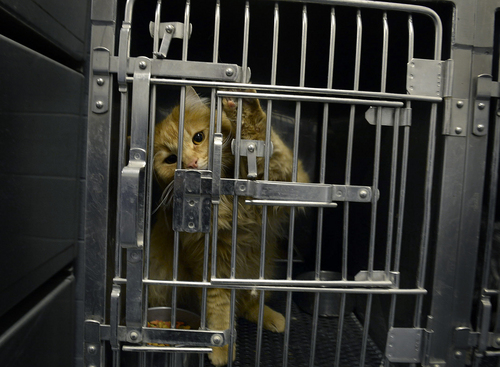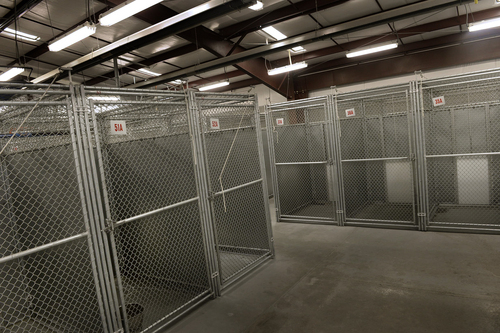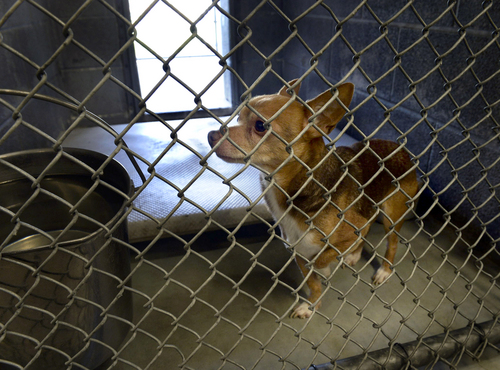This is an archived article that was published on sltrib.com in 2014, and information in the article may be outdated. It is provided only for personal research purposes and may not be reprinted.
Sandy • Officials are considering turning the city's animal shelter into a no-kill facility that would save at least 90 percent of the dogs and cats there.
The effort, which would combine public and private resources, calls for increasing adoptions and sterilizing free-roaming cats. The nonprofit Best Friends Animal Society says it could implement a trap-neuter-return program that eventually would lead to a drop in feral and stray felines, estimated to be in the thousands in Sandy.
Sandy council members are still exploring the no-kill proposal and have requested a cost analysis from city staffers. They also want to hear from residents, who can comment by emailing Councilwoman Kriss Coleman-Nicholl at kcolemanappraisal@comcast.net.
In 2013, a total of 993 cats and dogs came into the shelter and 66 percent left alive — 94 percent of the dogs and 32 percent of the cats. Twenty percent of those animals were adopted from the shelter, while 61 percent of the dogs and 6 percent of the cats were returned to their owners.
Coleman-Nicholl thinks implementation will be easy for Sandy because its shelter intake numbers are low and a no-kill program would not be cost-prohibitive. Another Sandy City Council member, Linda Martinez Saville, who has been advocating the switch to no-kill for years, also is optimistic about the prospect of increasing the save rate.
"What we're going to do is educate ourselves first and then go from there," Saville said. "I think it will be something great for our city."
The push to reduce animal euthanasia has picked up recently, with the announcement last month of an initiative to make Utah a no-kill state. Best Friends is kicking in $1 million for the No-Kill Utah campaign and is being supported by 36 other animal welfare groups in the state.
Just days before the March 30 launch, officials announced the West Valley City-Taylorsville Animal Shelter had achieved a 90 percent save rate with the help of Best Friends. Utah cities and counties saved 70 percent of the animals they sheltered in 2013, and 23 of the state's 56 shelters have reached no-kill status, according to Best Friends.
No-kill is actually low-kill because almost all shelters put down animals that are too sick to recover, gravely injured or vicious. Only cats and dogs are included in the no-kill calculation; other animals, including wildlife and livestock, are excluded from the figures.
Salt Lake County Councilman Arlyn Bradshaw, who is the No-Kill Utah manager for Best Friends, said his organization defines no-kill as a 90 percent save rate of cats and dogs because mercy euthanasia is acceptable.
At an April 15 Sandy council planning meeting, Bradshaw outlined how the city could create a no-kill shelter with the help of Best Friends.
The steps include increasing adoptions by extending hold times at the shelter and having volunteers socialize the cats and dogs to make them more likely to be adopted, he said.
Another step toward a no-kill Sandy is promoting spay and neuter services, which would include a Best Friends voucher program for low-income residents, Bradshaw said.
And a big element, he said, is a trap/neuter/return (TNR) program that lowers the population of feral and stray cats and reduces the number that end up at the shelter.
Under this program, the animals are trapped, sterilized and vaccinated at a shelter or clinic and released in the area where they were found. Once back in their home territory, the cats are fed by area residents who have agreed to care for them, and their population naturally dwindles. An ear on each cat is cropped so animal control workers know they are sterilized when they see them.
TNR was the primary program that helped Salt Lake County reach its no-kill goal, Bradshaw said. Prior to 2010, 63 percent of cats coming into the shelter were being put down, and now the facility has an average 90 percent save rate for cats and a 94 percent overall live release rate, he said.
Twitter: @PamelaMansonSLC









